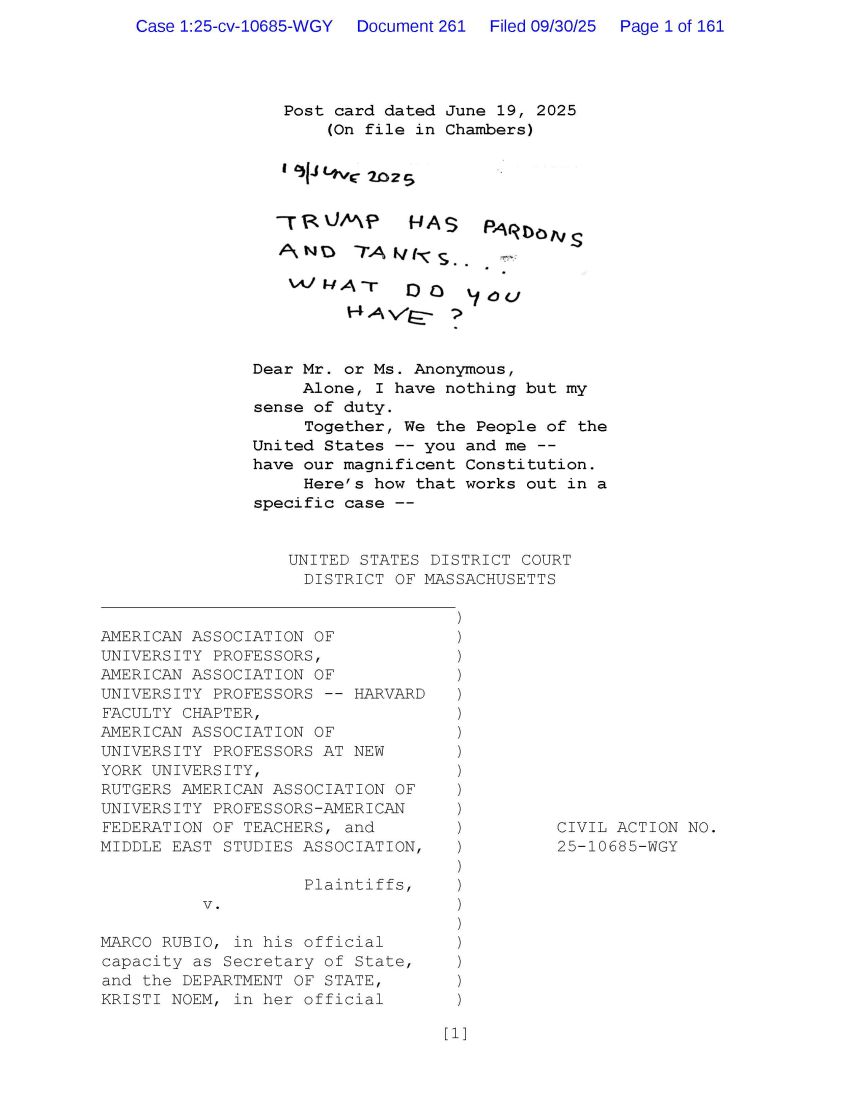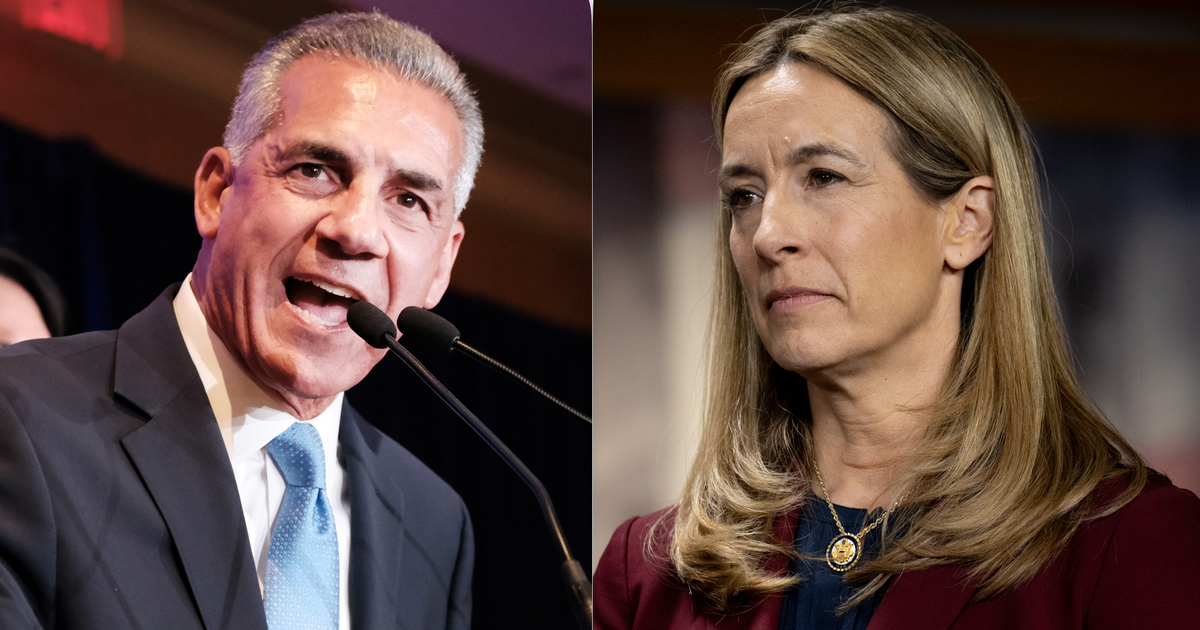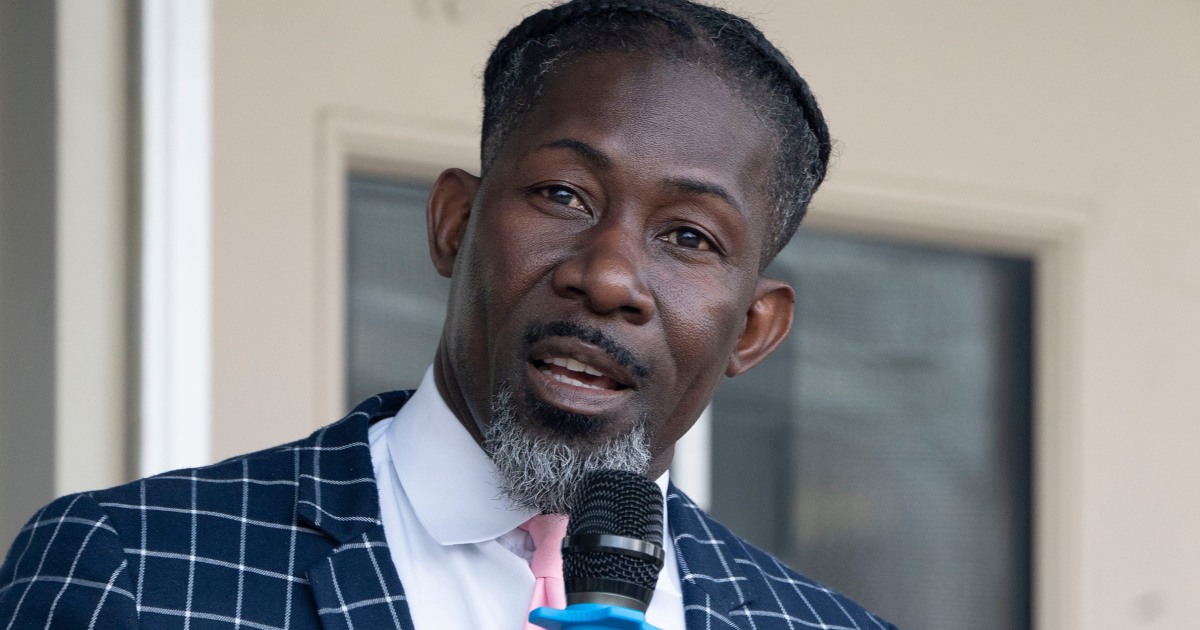Not since the years before the Civil War had a trial-level federal judge signed off on an opinion simply as “Judge of the United States.”
But Senior Judge William Young, a nearly 50-year veteran trial-level judge in Massachusetts, decided the time is now, and then some.
In a book-length opinion on Tuesday, Young ruled that the Trump administration can’t deny First Amendment protections to non-citizens, such as pro-Palestinian protesters on college campuses, or retaliate against them because of their positions. The opinion rules against the Trump administration’s immigration policy, and executive orders, and harshly critiques President Donald Trump’s approach to using his power.
Yet Young chose to include in his legal writing an unusual set of rhetorical flourishes.
“I don’t think I’ve seen an opinion like this from a district court in a very long time,” Jeremy Fogel, a former federal district judge, told CNN on Tuesday.
Inside the 161-page document published by the court, Young includes: direct remarks to a pro-Trump correspondence; footnotes citing major figures of world and American history; personal quotes—nearly all of which are unusual to have in a court decision, at any level.
“It’s a sign of the times that a federal judge would write an opinion like this,” Steve Vladeck, CNN Supreme Court analyst and Georgetown Law professor, said on Tuesday. “Judge Young is committing to writing what so many of us are thinking.”
In addition to his unique signature, Young included an anonymous, threatening note atop the opinion that he received this summer, plus his response to that postcard now.
In a set of large, bolded print on the first page of the opinion before even its formal header, Young makes public a photocopy of a postcard he received in his judicial chambers in June.
The handwriting, chillingly, says “Trump has pardons and tanks … what do you have?”
His response to the postcard-sender sits just below, in what looks to be Young’s typewriter font:
“Dear Mr. or Ms. Anonymous, Alone, I have nothing but my sense of duty. Together, We the People of the United States – you and me – have our magnificent Constitution. Here’s how that works out in a specific case – “

His full opinion then follows.
After signing the opinion, Young returns to address his postcard-writer, inviting the person to visit his courthouse in Boston. “I hope you found this helpful. Thanks for writing. It shows you care. You should.”
Young’s opinion and structure quickly caught the attention of people across the legal community and the federal bench on Tuesday.
“Judges are free to use their opinions to comment on the law and larger issues, as long as the focus of the opinion is right,” said Fogel, who now directs the Berkeley Judicial Institute at UC Berkeley Law. “Legal opinions are not usually that exciting. He was trying to say, this is really important.”
Fogel called some of the choices Young made to structure the opinion “colorful,” and indicative of frustration many district-level judges are feeling this year, in the Trump administration and with many emergency rulings coming from the Supreme Court above them.
Young has critiqued the Trump administration’s governance before, at length, and has also made waves within the federal judiciary. He previously called the administration’s halting of public health grants racial discrimination, and apologized in court after Justice Neil Gorsuch wrote about lower courts not following prior Supreme Court orders.
“He’s a deeply principled person, and he takes the role of being a federal judge very seriously,” Fogel added.
Some in the legal community say Young shouldn’t have gone so much above the normal form for writing an opinion.
“Judicial opinions are supposed to be civics lessons. They’re not supposed to announce they’re civics lessons,” Vladeck said. Young’s approach could potentially weaken the opinion’s ability to withstand appeals, which are likely, Vladeck said, and exacerbate the tension between district-level judges with both the president and the Supreme Court.
“Maybe it has cathartic value, but from the perspective of our legal system, it’s not healthy,” Vladeck said.
In a statement to CNN, DHS spokesperson Tricia McLaughlin said the judge had stoked “the embers of hatred” by his ruling.
“Less than a week after a terrorist attack at an ICE facility in Dallas, a craven Judge is smearing and demonizing federal law enforcement,” McLaughlin said. “Our federal law enforcement officers face a 1000% increase in assaults against them, unprecedented online doxing of our agents and their families, and they’re being stalked and pummeled by rocks and Molotov cocktails.”
Even Young himself seems to acknowledge, within the opinion, how abnormal times call for the abnormal measures he’s decided to take.
“In the golden age of our democracy, this opinion might end here,” he wrote, only halfway through his broadside of the Trump administration. “After all, the facts prove that the President himself approves truly scandalous and unconstitutional suppression of free speech.”
Yet following his opinion, Young adds, “nothing will happen. The Department of Justice represents the President, and Congress is occupied with other weighty matters. Nor will there be any meaningful public outcry,” before turning to make his case that the exercise of free speech must continue, protected from a government that wants to chill it.

Source link


